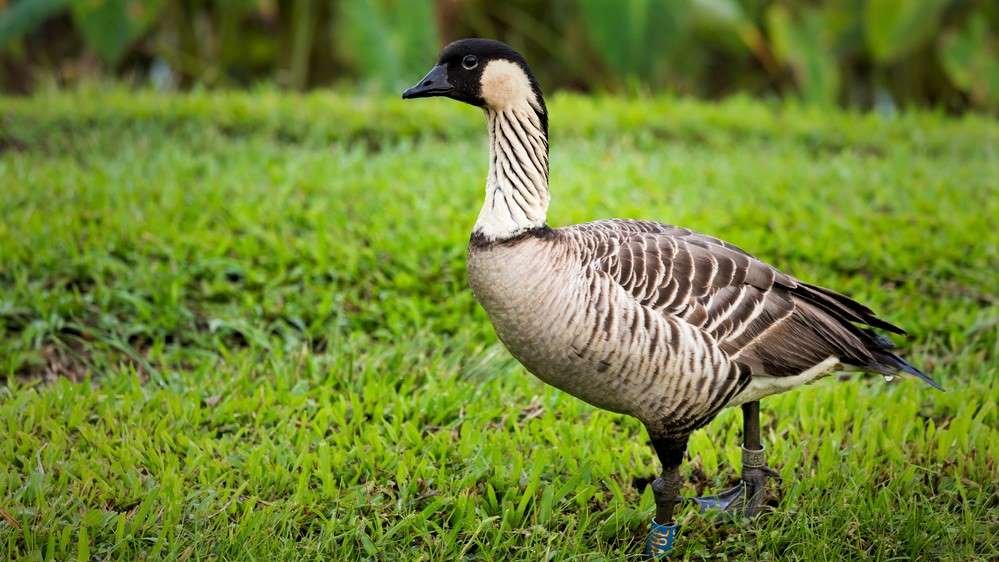Hawaii State Bird: Wild Nene (Hawaiian Goose)
Nene: A Quick Look
The Hawaiian Goose, also known as Nene, is a unique species endemic to the Hawaiian Islands. Its black head, bill, tail feathers, legs, and webbed feet instantly distinguish it from its Canadian Goose relatives. The Nene has a buff-colored cheek patch, gray-brown body, and white rump, with males slightly bigger than females. Its diet mainly consists of grazing on dry grass and native shrubs, with most of its water from berries. This semi-terrestrial, non-migratory bird has a breeding season that starts in October and ends in February.
Unfortunately, the Nene has faced a long battle with extinction, dropping its population to less than 30 in the mid-1900s. Thankfully, conservation efforts and successful breeding programs have increased the population to around 3,000 birds. Despite this progress, threats threaten the Nene, such as habitat loss, non-native species, and human disturbance. Thus, conservation management is still necessary to ensure the Nene’s survival.
Nene Goose (Branta sandvicensis) Introduction
The Nene Goose (Branta sandvicensis) is an endemic species of the Hawaiian Islands. It belongs to the subfamily Anserinae and the tribe Anserini, along with other true geese. It is Hawaii’s official state bird, distinguished by its short bill and large feet. Despite the long struggle against extinction in the mid-1900s, the Nene population is now around 3,000 and growing.
Identification and Appearance
Nene Geese are easily identifiable by their buff-colored cheeks, black face, cap, and hindneck. They have dusty black feet that are not entirely webbed and range in size from 21 to 26 inches in length. The males and females have identical plumage, similar to the Canada Goose, but with black and buff coloring.
Nene Geese make a variety of calls, mostly soft and conversational. The loudest and most commonly recognized call is similar to Canada Goose’s “honk.”
Distribution and Habitat
Fossil deposits suggest that the Nene Goose once inhabited Kauai, Molokai, Maui, and the Big Island. Currently, they are distributed on the slopes of Mauna Loa, Kilauea, and Hualalai, and a reintroduced population exists in the Haleakala Crater area in Maui. They utilize upland habitats, pastures, and grasslands.
Behavior
Nene Geese are non-migratory and make island-wide movements only. They are semi-terrestrial and have reduced toe webbing. They breed in the winter season, starting in October and ending in February. They typically nest in shallow depressions on the ground but sometimes in shrubs.
Diet, Reproduction and Growth
The Nene is a grazer/browser associated with lava fields and dry grass/native shrub ecosystems. In the wild, its diet consists of grass, herbs, and berries, which provide most of its water intake. Nene is fed bird chow, vegetables, grass, and herbs in captivity.
The Nene breeding season begins in October and ends in February, corresponding to the wet winter season in Hawaii.
Conservation and Populations
The Nene has endured a long struggle against extinction, which was almost successful in the 1940s due to hunting. Fortunately, rescue and breeding efforts have been undertaken, and the population is now small but stable, with about 800 wild Nene rising. It is still threatened by introduced mongooses, feral dogs, and cats, and preservation efforts are continuing.
Wild populations of Nene can be found in various parks and refuges in Hawaii. Captive Nene can also be seen at the Honolulu Zoo. People mustn’t feed the Nene, as it can disrupt their natural behavior.
Sources:

